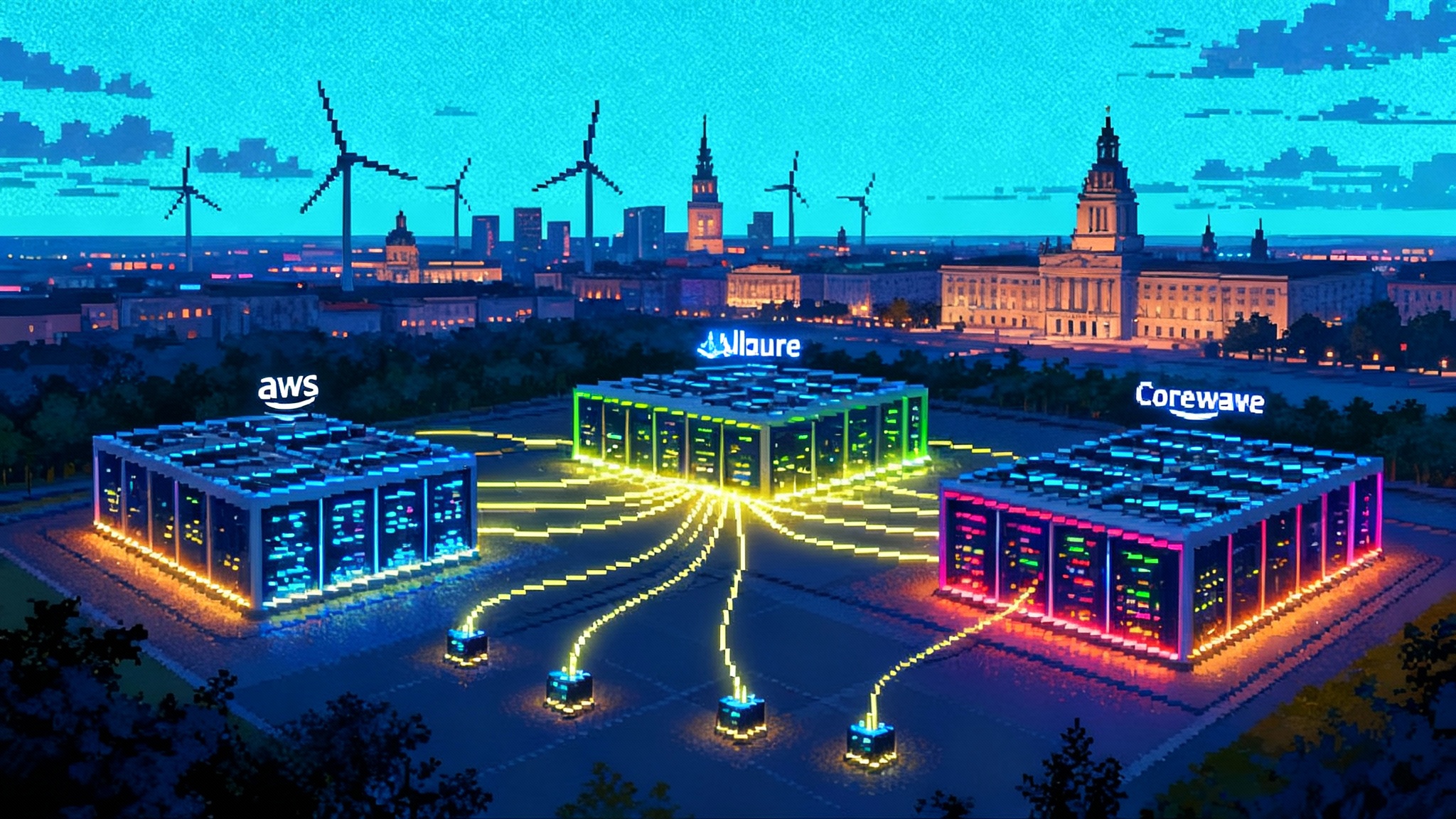Open-Weight Reasoning Takes Over: Cheaper Agents, New Moats
In 2025, reasoning models went open weight and changed the unit economics of long‑horizon agents. Here is how lower costs, computer use, and better orchestration are shifting vendor moats from secret weights to operations, trust, and telemetry.

Breaking: Reasoning goes open weight
The language model story in 2025 took a sharp turn. The headline is not that models got bigger. It is that models learned to think more deliberately and then went open weight. Chinese lab DeepSeek kicked off the year by publishing usable weights for its R1 family and proliferating distilled variants. By late summer, OpenAI surprised the market by releasing its first widely usable open‑weight models in years, a move framed as a response to developer demand and a recalibration of strategy. That single decision changed procurement conversations across startups and large enterprises, because it put a new option on the table: run capable reasoning models locally, customize them deeply, and pay cloud prices only when you must. The cost curve for long‑horizon agents bent downward overnight. See the coverage of OpenAI releases open‑weight models.
Later in the year, Abu Dhabi’s Mohamed bin Zayed University of Artificial Intelligence, working with G42, introduced K2 Think as a compact, fully open system that stresses reproducibility and transparent training choices. This was not just a lab demo. It was an argument about where competitive advantage will sit in 2026: fewer secrets inside the weights, more differentiation in how you orchestrate, supervise, and operate fleets of agents. MBZUAI’s announcement of K2 Think as a fully open system set a new bar for what “open” can mean in reasoning.
Open weight is not the same as open source
Open weight means you can download the trained parameters, fine tune them, quantize them, and run them wherever you like. You do not necessarily get the full training data, full recipes, or the entire software pipeline. A good metaphor is a finished car with the hood unlocked but without the factory’s tooling. You can swap parts, tune the engine, and repaint it, but you did not get the manufacturer’s assembly line. Fully open source would be the car, the tools, the bill of materials, and the production process. In 2025, the market mostly got the unlocked car, which is already enough to change behavior.
Why this matters: once you have weights, your team can make pragmatic trade offs. You can prune layers, choose an 8 billion parameter variant for latency, specialize a 32 billion model for your domain, or spin up a hefty 100 billion class model for internal batch jobs. You are no longer locked into a single provider’s per token price and product cadence.
Reasoning models change how agents are built
Reasoning models spend tokens to think before they act. Rather than blurting an answer, they unroll intermediate steps, critique their own plan, and choose tools more carefully. That has two immediate effects on agents.
First, reliability improves on hard tasks. A sales ops agent that must reconcile dozens of spreadsheets and a customer relationship management export can keep a running plan, check intermediate calculations, and retry stubborn steps. A code refactoring agent can split a migration into units, test each unit, and revise when tests fail. In both cases, the agent burns extra tokens, but it avoids catastrophic errors.
Second, the design surface for orchestration expands. When a model exposes intermediate thoughts, a controller can read them and adjust execution. If the chain of reasoning shows confusion about a database schema, the controller can inject schema docs, pause the run, or route to a schema‑aware tool. This orchestration lens builds on the inference‑first era many teams adopted in 2024 and early 2025.
Two concrete examples:
- A support automation agent handling warranty claims reads receipts, extracts serial numbers, opens a manufacturer portal, and files paperwork. With explicit reasoning, it can check that the serial pattern matches the brand’s rules before submitting, which cuts rejected claims.
- A research agent performing a competitive analysis builds a plan upfront, breaks the web search into subtopics, proposes a scoring rubric, and then scores each competitor. The plan and rubric are artifacts your analysts can review and reuse.
The computer‑use breakthrough
“Computer use” is shorthand for letting agents operate a real desktop or browser with clicks and keystrokes. It sounds simple, yet it is the first time software reliably writes and uses software, because the agent is not confined to an application programming interface. It can install extensions, run a spreadsheet macro, or debug a web form that keeps failing. This trend dovetails with the browser becoming the runtime, as explored in browser as the agent runtime.
This year, the leap came from pairing computer use with open‑weight reasoning. If you can run a capable 20 billion parameter model on a local workstation, you can now afford to give the agent more time to think between steps without incurring large per token fees. That extra thinking time is exactly what makes brittle tasks more robust. Instead of a single guess, the agent can attempt, check, and self correct.
Think of a long‑horizon workflow like a cross country drive. Non reasoning models try to sprint across the country in one shot and hope to land at the destination. Reasoning models treat the trip like a series of legs with rest stops. They plan the next leg, check the map after each turn, and change routes based on traffic. The trip takes longer in tokens, yet the arrival rate shoots up.
Compute economics in plain numbers
Here is a simple way to frame the cost shift.
- Tokens as fuel. A long‑horizon agent that uses a browser may consume 50 thousand to 500 thousand tokens in a day of work, depending on how much it reads and writes. Reasoning increases this, since the model is drafting plans and critiques. That looks expensive if you pay list prices to a closed hosted model.
- Locality as leverage. With open weights, a startup can rent spot graphics processors or deploy on owned hardware. The per token cost becomes a function of amortized hardware and power, not a per token tariff. You can also mix strategies: run a local 20 billion model for most steps and escalate to a larger cloud model for the handful of hard hops.
- Efficiency stacks. Open weights let you adopt the tricks that vendors use internally. You can quantize weights to lower precision without tanking quality, use speculative decoding so a smaller model drafts and a larger model verifies, or cache tool outputs and reuse them across runs. These are not theoretical. They are increasingly off the shelf in open inference stacks.
A blended example makes this concrete. Suppose your research agent requires 200 thousand tokens for a three hour job that compiles a competitive landscape and drafts a briefing deck. A local 20 billion model handles browsing, extraction, and drafting. Two or three times per run, your controller escalates thorny reasoning to a larger model hosted in the cloud. If local tokens cost you pennies per million and escalations cost dollars only when they trigger, your average job cost falls into the single digit dollars. Last year the same job often sat in the tens of dollars. That delta is the difference between running one pilot and running one hundred pilots.
What changed in 2025
Three system shifts explain the year’s acceleration.
-
Supply caught up. After two painful years of scarcity, hardware availability improved, and multiple clouds began to sell purpose built instances for inference rather than only training. That matters because long‑horizon agents need sustained throughput, not just bursty training jobs.
-
The floor got higher. Mid scale models around 20 to 40 billion parameters became surprisingly strong at reasoning once properly post trained. They became the new sensible default for enterprise prototypes. Many teams discovered that a specialized 32 billion model, paired with well engineered tools, beats a much larger generalist for their workflow.
-
The ecosystem learned to operate fleets. Teams stopped trying to make one giant model do everything. Orchestration layers learned to route tasks between small, mid, and large models, track budget, and enforce safety policies. This feels like service oriented architecture for intelligence. Once your platform can schedule work across a fleet, you realize you can swap models in and out without drama. Open weights make that swap cheaper and faster.
K2 Think and the parameter efficiency argument
MBZUAI’s K2 Think is notable because it argues for a different kind of progress. Instead of chasing ever larger parameter counts, it pursues verifiable training, compact size, and speed. The claim is that a carefully trained compact model can reach the quality threshold needed for tough tasks at a fraction of the cost. If that holds, more of the value moves to the surrounding system: guardrails, retrieval, tool use, and logging. The release also stresses that truly open is not just download links. It is the recipe, the data choices, and the test time tricks that make the model reason well. The K2 Think announcement underlines this point by foregrounding reproducibility.
For teams building agents, this is a gift. You can chase latency and cost without guessing why a model behaves the way it does. When something goes wrong in production, reproducibility beats raw size because you can trace the behavior back to a training decision.
Design patterns for long‑horizon agents
Open‑weight reasoning models enable a set of patterns that were brittle or uneconomical a year ago.
- Slow thinking on purpose. Give the agent a fixed thinking budget per step. For example, allow 400 tokens of internal planning before each action. The extra sixty seconds per step pays for itself by reducing rollbacks and manual escalations.
- Multi step verify. After an action, force the agent to write a short checklist that a checker model must pass before the next step. For example, after an account provisioning step, confirm that a welcome email is present and the login succeeds in a clean browser profile.
- Tool shaped prompts. Instead of giant instruction blobs, write one prompt per tool that explains inputs, outputs, failure cases, and examples. Open weights make it cheaper to iterate these prompts by the hundreds and evaluate them offline.
- Retrieval as scaffolding. Treat retrieval not as a search feature but as your agent’s working memory. Bring in ticket histories, customer data, and a list of system constraints at each step.
- Escalate lightly. Route a small subset of subproblems to a large hosted model. Use clear contracts so the big model returns a plan or a correction, not a full rewrite.
These patterns do not require a frontier model. They require a good mid scale reasoning model, a safe computer‑use runtime, and instrumentation.
The operator’s view: safety and governance
Letting an agent drive a computer is a governance question, not just a performance question. Open weights help because you control the runtime. You can keep sensitive data on your networks, decide what the agent can click, and log every action. The guardrails that matter in practice include:
- Least privilege desktops. Give the agent a clean browser, a sandboxed file system, and explicit allow lists for domains and applications.
- Two person integrity for sensitive actions. Before the agent wires funds or changes a production setting, route to a human check.
- Action led evaluations. Judge the system by completed tasks, not just benchmarks. Track completion rate, rollback rate, human escalations, and average cost per task.
- Immutable audit logs. Record screenshots or video for each step and store them with hashes. This sounds heavy, yet it turns security reviews from arguments into evidence.
This approach aligns with the trust stack for agents that buyers increasingly require.
How vendor moats reset for 2026
Open weights do not erase moats. They change where moats live.
- Distribution becomes everything. The default agent in the browser, the operating system, the office suite, or the cloud console will win time and attention. If a provider ships a safe and fast computer‑use runtime that comes prewired into everyday tools, it will own the first call for many tasks.
- Orchestration beats single model quality. The best providers will run fleets of models, select the right one per step, and prove they can control latency and spend. Expect vendors to sell service level agreements not for prompts but for workflows, such as “research a market and produce a management briefing.”
- Data gravity shifts to telemetry. The valuable data is not scraped text. It is traces of how agents solved tasks, where they got stuck, and which prompts and tools worked. This is why product analytics for agents will be as important as the models that power them.
- Hardware access still matters, but the story is subtler. Long term contracts with specialized clouds will keep throughput affordable for big providers. At the same time, open weights let customers arbitrage between clouds and on premises clusters.
- Compliance becomes a product, not a slide. Buyers will ask for provable controls over what the agent can do on a desktop, how data flows, and how incidents get handled. Vendors with strong governance runtimes will gain trust faster than those with higher benchmarks.
The net effect is that moats move from secret sauce inside a single model to well run systems that combine reasoning models, computer‑use sandboxes, and telemetry. In that world, the fastest learners win. Teams that can run a hundred experiments with open weights will outpace teams that ask a closed model to do one more trick.
What builders should do now
If you build products, you have a six month window to lay foundations before the 2026 platform battles congeal.
- Pick a mid scale open‑weight baseline and fine tune it on your domain data. Keep a larger hosted model in reserve for tough subproblems. Design interfaces that make escalation explicit and auditable.
- Instrument everything. Log tokens, plans, actions, and failures. Turn those traces into dashboards that a product manager can read without a doctorate.
- Budget for thinking. Give agents token allowances for planning and checking. Treat extra thinking as a cost saving device, not a luxury.
- Write tool contracts. Define inputs, outputs, and failure codes for each tool. Your agent is a conductor; clear sheet music yields better orchestration.
- Simulate before you scale. Build a simulator that replays messy real world runs, including timeouts and flaky websites. Run your candidate models and prompts through the simulator before shipping to production.
- Stand up safety reviews. Create a lightweight process for approving new capabilities in your computer‑use sandbox. Security and reliability are product features, not paperwork.
The competitive map by year end
By December, the market will likely have three tiers.
- Frontier providers with the biggest models and the deepest hardware commitments. They will compete on performance, distribution, and a safe computer‑use runtime.
- Open‑weight leaders that ship strong mid scale reasoning models and great tooling. They will win on cost, customization, and developer love.
- Specialists that package models and runbooks into vertical agents. Think agents for vendor onboarding, clinical documentation, or energy trading. They will compete on domain expertise and evidence of outcomes.
Customers will not pick just one. They will assemble combinations. Open weights make those combinations practical.
The takeaway
The past year proved that reasoning quality is not a luxury reserved for closed models and that open weights are more than an ideology. They are an operating advantage. When you can run a capable thinker locally, you can afford to let it think. Long‑horizon computer‑use agents stop being novel demos and start handling real work with logs and budgets you can explain to a chief financial officer. Vendor moats do not disappear; they migrate to orchestration, safety, and telemetry.
The winners in 2026 will not be the teams with the single most powerful model. They will be the teams that learn fastest with open‑weight reasoning, put guardrails where it matters, and scale what works. In other words, the teams that turn thinking into a system.








